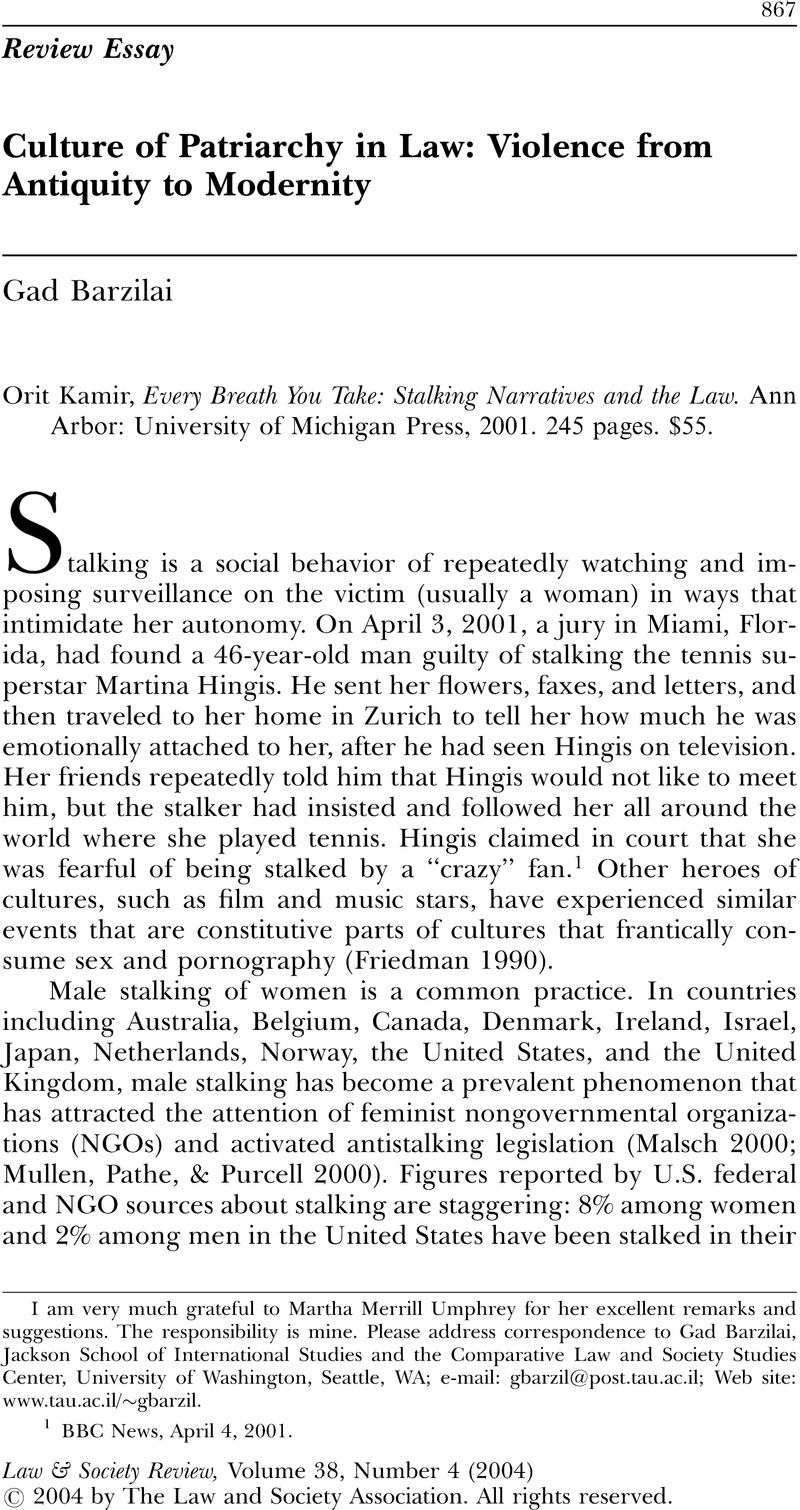Crossref Citations
This article has been cited by the following publications. This list is generated based on data provided by Crossref.
Sezgin, Yüksel
2010.
How to Integrate Universal Human Rights into Customary and Religious Legal Systems?.
The Journal of Legal Pluralism and Unofficial Law,
Vol. 42,
Issue. 60,
p.
5.
Gill, Aisha K.
Begikhani, Nazand
and
Hague, Gill
2012.
‘Honour’-based violence in Kurdish communities.
Women's Studies International Forum,
Vol. 35,
Issue. 2,
p.
75.
Ekvall, Åsa
2013.
Gendered Perspectives on Conflict and Violence.
Vol. 18,
Issue. ,
p.
273.
ÖZTÜRK, Necla
2017.
AİLENİN KORUNMASI VE KADINA KARŞI ŞİDDETİN ÖNLENMESİNE DAİR KANUNUN GETİRDİĞİ BAZI YENİLİKLER VE ÖNERİLER.
İnönü Üniversitesi Hukuk Fakültesi Dergisi,
Vol. 8,
Issue. 1,
p.
1.





